News
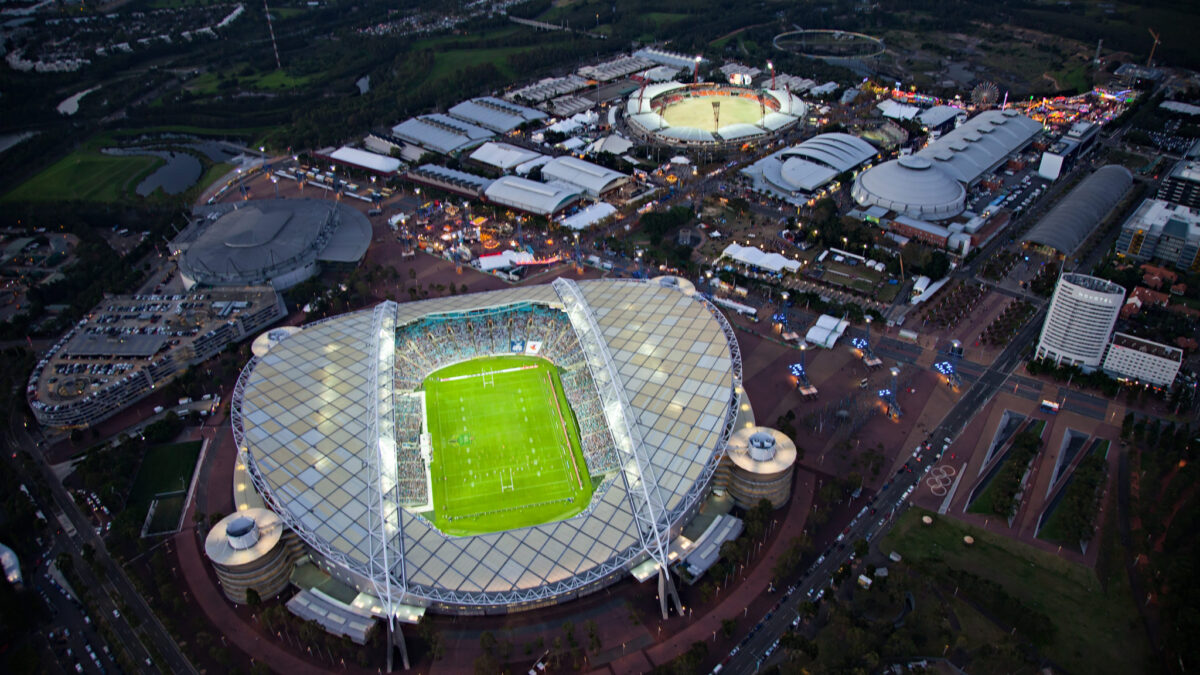
September 29, 2020
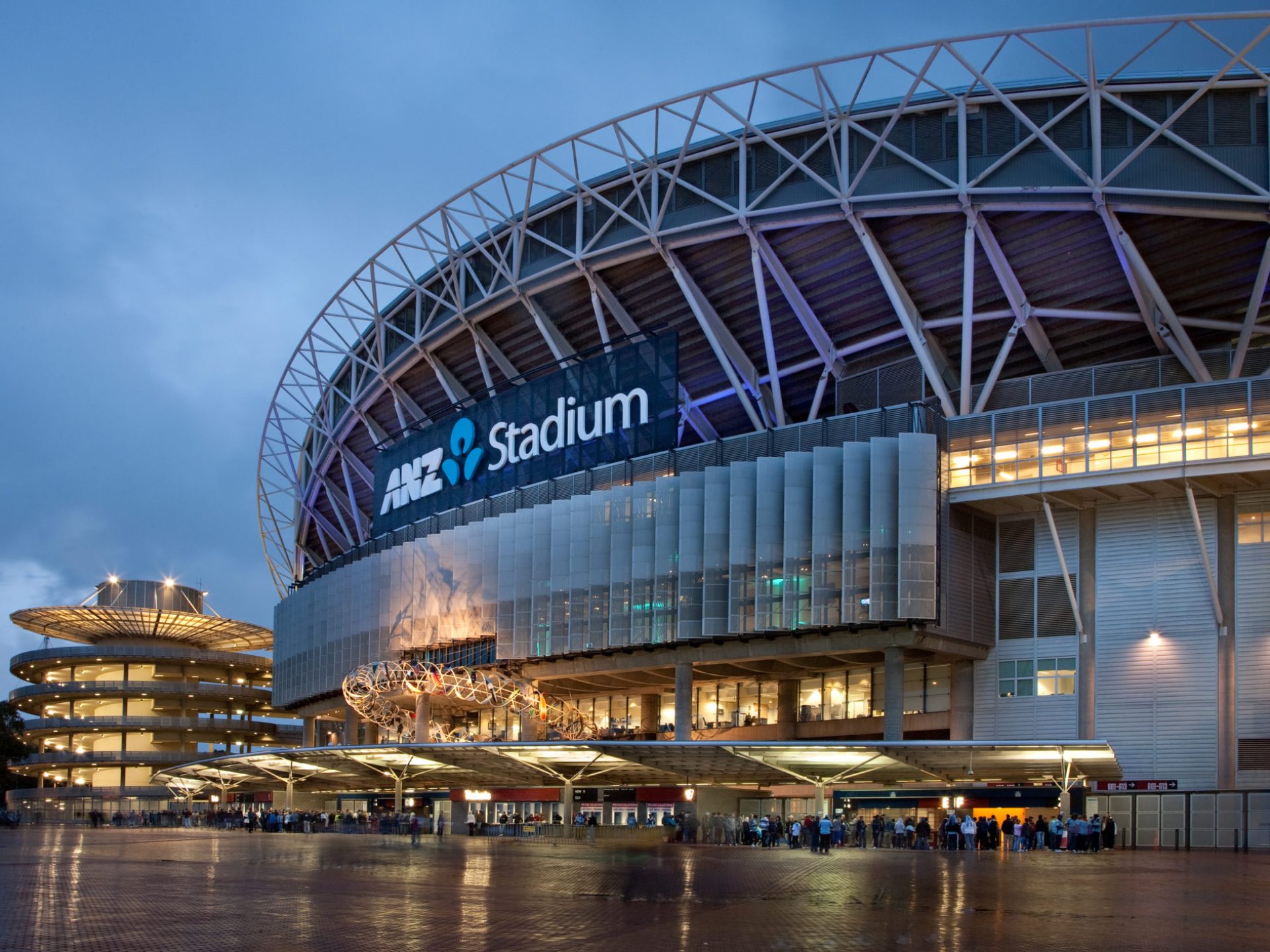
The green footprint of ANZ Stadium leveraged the Olympics into new territory while also launching Australia’s future in environmental design and sustainable infrastructure.
For the Populous team, designing Ecologically Sustainable Development (ESD) principles into the stadium while also designing one of the largest capacity Olympic stadiums ever built, they had an additional design challenge to consider.
Populous Managing Director, Paul Henry, said the design brief was to create a ‘distinctively-Australian’ building for the Olympics but, it had to re-configure post-Games.

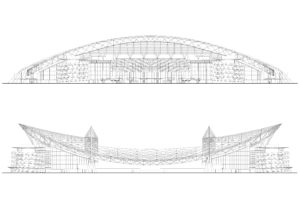
Original sketch and drawings of Stadium Australia, now ANZ Stadium
“It had to include ESD principles, the design had to live up to the Olympic Opening Ceremony and it had to supporting the existing infrastructure of the city to provide a legacy for Sydney.
“Sydney already had two internationally recognised man-made icons; the Harbour Bridge and the Opera House and ANZ Stadium was designed as a sports and leisure venue to compliment these existing structures and become the place to host large scale, major international events.
“The distinctive white steel trusses that support the roof of the stadium, each 295 metres long, half the span of the Harbour Bridge, are deliberate symbols of power,” Paul explains.
To accommodate the Olympics, the design solution was to include temporary north and south stands to host 115,000 during the Olympic Games, and post-Games, the removal of the upper end tiers reduced the stadium to 85,000 for its long-term use.
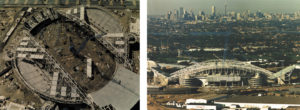 Construction of the stadium, 1998
Construction of the stadium, 1998
Temporary structures have less impact on the surrounding environment and several Populous-designed projects have reused, refurbished or been given more radical “redesigns”, including the 2012 London Olympic Stadium which held 80,000 during the Games and reduced to 25,000 in legacy mode.
When Populous designed the London 2012 Olympic Stadium, it was with an ethos of ‘embracing the temporary’, in the knowledge that, post-Games, the stadium’s function would change and, as a result, the structure would need to change too. One of the main stipulations for the future use of the stadium was that it would retain its running track, whilst functioning as an economically sustainable multi-use venue.
ANZ Stadium was designed to accommodate the Sydney 2000 Olympics and immediately become a venue that was purpose fit for major world events like Bledisloe Cup, Rugby World Cup, international music tours while creating a way for Sydney to win more major events.
“Stadia are big pieces of infrastructure and thus their “embodied” energy is a key consideration in terms of a sustainable design and future redevelopment.
“The adaptive reuse of the building’s existing structure and construction materials allows for a dedicated stadium while reducing the energy going into redeveloping new ones,” Paul explains.
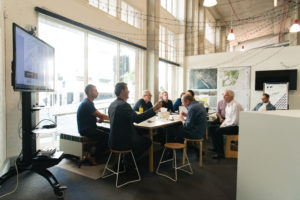 The Populous team working collaboratively
The Populous team working collaboratively
Now, 20 years on, ANZ Stadium was to undergo a redevelopment that would further build on the existing ESD elements, however, the plans to redevelop and upgrade the stadium have been cancelled by the NSW Government.
The modern-day legacy that is ANZ Stadium remains in the pioneering of its infrastructure sustainability while it set new standards in environmental design and construction in Australia.
“Populous has worked on every Summer and Winter Olympic Games since 2000, which has taught us a lot about what it takes to design large, flexible, multi-sports stadiums that remain viable long after the Games move on.
“Not only have we been able to integrate lessons learned into the design of smarter venues that aren’t necessarily required for an Olympics, we have designed them with the potential to host them if the time came.
“Together as a team of specialists, we hope we can change attitudes and preconceptions of the value of our sport and entertainment buildings, in particular our stadia, so that they can be recognised for what they are; huge potential energy harvesting centres for urban ecosystems, to create a more sustainable future,” Paul said.
Lorem ipsum dolor sit amet consectetur, adipisicing elit. Non facere corporis et expedita sit nam amet aut necessitatibus at dolore enim quis impedit eius libero, harum tempore laboriosam dolor cumque.
Lorem, ipsum dolor sit amet consectetur adipisicing elit. Illo temporibus vero veritatis eveniet, placeat dolorem sunt at provident tenetur omnis, dicta exercitationem. Expedita quod aspernatur molestias eum? Totam, incidunt quos.